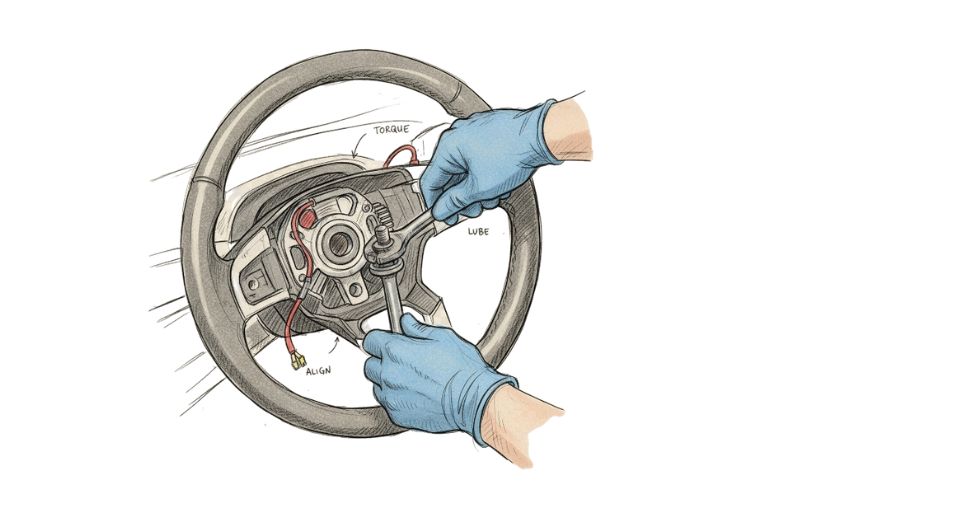
Sep 29, 2025

The new report published by Metastat Insight on the global automotive steering market puts the spotlight on an industry that touches the lives of millions of drivers daily across the globe. Steering systems, operating in the background and under the radar in the wider debate surrounding car technology, have direct effects on comfort, safety, and control on every road. With increasingly sophisticated cars, steering systems are no longer merely expected to be mechanically precise but should be headed towards intelligent support and silky-smooth adjustability. Such is the increasing significance that is part of the wider shifts in mobility, where customer experience and performance come together with technology momentum. market context
The modern automobile world faces intense pressure for safety, for efficiency, and for seamless driver connection. Increased road safety awareness and the fitting of electronic systems into motor vehicles have put steering at the center of technological innovation.
Conventional hydraulic designs, while robust, are now confronted with demands for reduced weight, improved energy efficiency, and compatibility with existing driver-assist systems. These demands have made steering technologies leading enablers for satisfying regulatory requirements in addition to customer demand. The automakers are looking for solutions that not only provide control but also compatibility with electronic stability programs, autonomous capabilities, and more intelligent vehicle architectures. how it works / why it's valuable
New steering systems are designed to convert driver intent into motion with high precision, minimizing effort and maximizing feedback. Hydraulic-to-electric transitions show how performance gains evolve in step with industry development. Electric systems minimize weight, reduce energy losses, and integrate with software support, producing cars that are agile but not at the expense of control. Design agility also provides the steering agility for passenger cars, business fleets, and luxury versions where driving dynamics are a prime consideration.
Apart from functionality, these systems offer a basis for sophisticated driver assistance, enabling gliding lane keeping and adaptive control. Coupling comfort, protection, and preparedness for future mobility solutions highlights the significance of steering systems. growth story / technological evolution. The evolution of steering technology is the story of incremental improvement and breakthrough years.
Early dependence on mechanical linkage gave way to hydraulic aid, which eased the need for hand power. Later, focus turned to efficiency, and electric power steering was the result. This was a revolution shift, enabling sensor-based assistance compatibility and autonomous innovation. Following optimization has gone further to enhance reliability, eliminate noise, and become more precise.
Steer-by-wire incremental enhancements illustrate how the market is driving to cars that need minimal driver intervention while providing redundancy and safety. These innovations show how steering evolved from being a supporting feature to being an epicentre of car innovation. regional or worldwide trends There are usage patterns differently across the world, both in demand and regulation. Established automotive belts of Europe and North America have shown high rates of adoption of electric steering simply because there has been great focus on sustainability as well as safety regulation. The Asia-Pacific economies provide a unique setting, in which urbanization and vehicle ownership growth boost the pace of need for innovative but value-for-money solutions. Emerging markets, where middle-class consumers are growing and car manufacturing investments are being made, recognize untapped growth.
Each region plays a role in global decision-making around how steering technologies are developed, launched, and scaled. In spite of growth, the steering market has problems that limit its growth at a high rate. The cost of manufacturing, particularly for complex electric and steer-by-wire systems, functions as a hindrance to mass application in price-sensitive vehicles. Forces of competition make matters difficult with automobile manufacturers and suppliers balancing technology differentiation with costs.
Meanwhile, opportunities are adamant. More integration with connected car platforms, the emergence of shared mobility services, and further movement toward autonomous driving create new opportunities for shaping technology. Innovations in materials and design offer increased efficiency, and partnerships among technology providers and automakers offer directly applicable solutions for changing consumer needs. why it matters now
The global automotive steering market by Metastat Insight is a point in time when steering is no longer merely about control but about making possible the mobility of the future. Every global societal value surrounding sustainability, safety, and digitalization converges in this technology. Steering systems determine how cars interact with the driver and the world outside, making them central to solving issues like city congestion, climatic footprint, and shifting consumer expectations. As cars move towards electric and autonomous drive, steering remains a central element in ensuring safety, manoeuvrability, and driving enjoyment. The future holds not only a world where steering is no longer hiding quietly behind the wheel but openly welcomed as the integral player of mobility innovation across the globe.
Drop us an email at:
Call us on:
+1 5186502376
+91 73850 57479